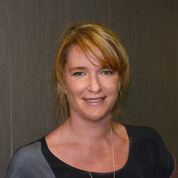Central Auckland > Public Hospital Services > Te Whatu Ora – Health New Zealand Te Toka Tumai Auckland >
Women's Health - Maternity, Pregnancy Care | Auckland | Te Toka Tumai | Te Whatu Ora
Public Service, Maternity, Obstetrics and Gynaecology
Description
Formerly Auckland DHB Women's Health - Maternity/ Pregnancy Care
Welcome to National Women’s Health. We want to make sure you and your baby are as happy and healthy as you can be during pregnancy, birth and after birth.
Our inpatient, newborn and high risk maternity outpatient services are located on the 9th floor of Auckland City Hospital in Grafton.
Our Walk-In Centre, Community outpatient services, Fertility and Gynaecology outpatient services are at the 6th floor of the Greenlane Clinical Centre.
Please visit the National Women's Health website for more information nationalwomenshealth.adhb.govt.nz
The Women's Health Information Unit is located in the Atrium area on level 9 at Auckland City Hospital.
Click the links below for more information.
Finding an LMC:
Pregnancy and postnatal care:
Education and support:
Consultants
-

Dr Lynda Batcheler
Obstetrician & Gynaecologist
-

Dr Philip Beattie
Obstetrician & Gynaecologist
-

Dr Sue Belgrave
Obstetrician & Gynaecologist
-

Dr Carolyn Bilbrough
Obstetrician & Gynaecologist with a special interest in Urogynaecology
-

Dr Astrid Budden
Obstetrician & Gynaecologist
-

Dr Marian Carter
Obstetrician & Gynaecologist
-
Dr Elizabeth Curr
Obstetrician & Gynaecologist
-

Dr Tim Dawson
Obstetrician & Gynaecologist, Urogynaecology subspecialty
-

Dr Emma Parry
Obstetrician & Gynaecologist with a Maternal Fetal Medicine subspecialty
-

Dr Gillian Gibson
Gynaecologist
-

Dr Jennifer McDougall
Service Clinical Director - Secondary Gynaecology
-

Dr Katherine McKenzie
Obstetrician & Gynaecologist
-

Dr Sunil Pillay
Obstetrician & Gynaecologist
-

Dr Shelley Reilly
Obstetrician & Gynaecologist
-

Dr Janet Rowan
Physician
-

Dr Lynn Sadler
Epidemiologist
-

Dr Martin Sowter
Obstetrician & Gynaecologist with a subspecialty in Fertility
-

Dr Fiona Stewart
Physician & Cardiologist
Referral Expectations
Fees and Charges Description
There are no charges for services to public patients if you are a NZ resident. Some medicines will require a small fee. Patients requiring Mirena may in some cases be expected to fund this if they do not meet national guidelines for their free provision.
If you are not a NZ resident you will be required to pay for your care.
To check if you will need to pay visit the Ministry of Health website www.moh.govt.nz/eligibility
For charges, please phone the Finance Department on (09) 630 9943.
Services / Common Conditions / Procedures / Treatments
Give babies and toddlers a HEALTHY start to every day! Come join in the fun, meet other mums, learn some great tips or relax and enjoy a hot cuppa! Healthy Babies Healthy Futures (HBHF) specialises in teaching mums how to buy, prepare, and cook the healthiest and tastiest dishes for all the family to enjoy. We bring you FREE fun activities like yoga, walking, box fit, tai chi, Pilates and meditation all at your own pace! Join a FREE Healthy Babies Healthy Futures programme today! Featuring our exclusive text messaging programme that sends you FREE health advice suited to baby’s development. To sign up or to find out more, check out their website for more information. Call us, to talk about babies’ health goals and which programme can help you! Danielle 09 822 8010 or text 022 657 8189 Fangfang 09 570 1188 ext 330 Maria 09 838 0743 Anjileena 09 - 815 2331 Healthy Babies Healthy Futures (PDF, 396.3 KB)
Give babies and toddlers a HEALTHY start to every day! Come join in the fun, meet other mums, learn some great tips or relax and enjoy a hot cuppa! Healthy Babies Healthy Futures (HBHF) specialises in teaching mums how to buy, prepare, and cook the healthiest and tastiest dishes for all the family to enjoy. We bring you FREE fun activities like yoga, walking, box fit, tai chi, Pilates and meditation all at your own pace! Join a FREE Healthy Babies Healthy Futures programme today! Featuring our exclusive text messaging programme that sends you FREE health advice suited to baby’s development. To sign up or to find out more, check out their website for more information. Call us, to talk about babies’ health goals and which programme can help you! Danielle 09 822 8010 or text 022 657 8189 Fangfang 09 570 1188 ext 330 Maria 09 838 0743 Anjileena 09 - 815 2331 Healthy Babies Healthy Futures (PDF, 396.3 KB)
Give babies and toddlers a HEALTHY start to every day!
Come join in the fun, meet other mums, learn some great tips or relax and enjoy a hot cuppa!
Healthy Babies Healthy Futures (HBHF) specialises in teaching mums how to buy, prepare, and cook the healthiest and tastiest dishes for all the family to enjoy.
We bring you FREE fun activities like yoga, walking, box fit, tai chi, Pilates and meditation all at your own pace!
Join a FREE Healthy Babies Healthy Futures programme today!
Featuring our exclusive text messaging programme that sends you FREE health advice suited to baby’s development.
To sign up or to find out more, check out their website for more information.
Call us, to talk about babies’ health goals and which programme can help you!
Danielle 09 822 8010 or text 022 657 8189
Fangfang 09 570 1188 ext 330
Maria 09 838 0743
Anjileena 09 - 815 2331
- Healthy Babies Healthy Futures (PDF, 396.3 KB)
Stopping smoking is one of the best things you can do for yourself and the health of your baby. It is possible to stop smoking and you can get free support and advice to help you and your family members. Give your baby the best - smokefree - start to life ADHB Smokefree Pregnancy Service Face-to-face intensive smoking cessation support is available for all pregnant women and their family members who live in the ADHB area. We will discuss the habits associated with smoking and how nicotine works and work with you or your family member to develop a quit plan. The service includes home visits, telephone follow-up and the provision of subsidised nicotine replacement therapy (NRT). The service is free of charge. For more information and/or assistance to stop smoking contact Smokefree Pregnancy Services: or Phone: 0800 667833 or (09) 307 4949 ext 27867 (leave a message - the line is cleared regularly) Email:
Stopping smoking is one of the best things you can do for yourself and the health of your baby. It is possible to stop smoking and you can get free support and advice to help you and your family members. Give your baby the best - smokefree - start to life ADHB Smokefree Pregnancy Service Face-to-face intensive smoking cessation support is available for all pregnant women and their family members who live in the ADHB area. We will discuss the habits associated with smoking and how nicotine works and work with you or your family member to develop a quit plan. The service includes home visits, telephone follow-up and the provision of subsidised nicotine replacement therapy (NRT). The service is free of charge. For more information and/or assistance to stop smoking contact Smokefree Pregnancy Services: or Phone: 0800 667833 or (09) 307 4949 ext 27867 (leave a message - the line is cleared regularly) Email:
Stopping smoking is one of the best things you can do for yourself and the health of your baby. It is possible to stop smoking and you can get free support and advice to help you and your family members. Give your baby the best - smokefree - start to life
ADHB Smokefree Pregnancy Service
Face-to-face intensive smoking cessation support is available for all pregnant women and their family members who live in the ADHB area. We will discuss the habits associated with smoking and how nicotine works and work with you or your family member to develop a quit plan.
The service includes home visits, telephone follow-up and the provision of subsidised nicotine replacement therapy (NRT).
- Phone: 0800 667833 or (09) 307 4949 ext 27867 (leave a message - the line is cleared regularly)
- Email:
Gestation is the length of a pregnancy from conception to birth (usually 40 weeks in humans). Gestational diabetes is a type of diabetes (glucose intolerance) that occurs in some women during pregnancy. Women with gestational diabetes have a high level of glucose (or sugar) in their blood because they do not have enough of the hormone insulin to cope with the extra demands of the growing foetus (unborn baby). In most cases, gestational diabetes is managed by diet and exercise and will usually disappear after the baby is born. Visit the National Women's website for more information about diabetes in pregnancy.
Gestation is the length of a pregnancy from conception to birth (usually 40 weeks in humans). Gestational diabetes is a type of diabetes (glucose intolerance) that occurs in some women during pregnancy. Women with gestational diabetes have a high level of glucose (or sugar) in their blood because they do not have enough of the hormone insulin to cope with the extra demands of the growing foetus (unborn baby). In most cases, gestational diabetes is managed by diet and exercise and will usually disappear after the baby is born. Visit the National Women's website for more information about diabetes in pregnancy.
You can contact Miscarriage Support Auckland by phone: (09) 360 4034 Email: Website: www.miscarriagesupport..org.nz Visit the National Women's Health website for more information on pregnancy loss and support. Miscarriage Information Sheet (PDF, 330.3 KB)
You can contact Miscarriage Support Auckland by phone: (09) 360 4034 Email: Website: www.miscarriagesupport..org.nz Visit the National Women's Health website for more information on pregnancy loss and support. Miscarriage Information Sheet (PDF, 330.3 KB)
You can contact Miscarriage Support Auckland
by phone: (09) 360 4034
Email:
Website: www.miscarriagesupport..org.nz
Visit the National Women's Health website for more information on pregnancy loss and support.
- Miscarriage Information Sheet (PDF, 330.3 KB)
Experts agree that breastfeeding is the best way to feed your baby. It creates a bond between you and your baby and provides the best nutrition for your infant. Breastfeeding also protects your baby against many illnesses. Additional information on breastfeeding can be found on the National Women's health website
Experts agree that breastfeeding is the best way to feed your baby. It creates a bond between you and your baby and provides the best nutrition for your infant. Breastfeeding also protects your baby against many illnesses. Additional information on breastfeeding can be found on the National Women's health website
Experts agree that breastfeeding is the best way to feed your baby. It creates a bond between you and your baby and provides the best nutrition for your infant. Breastfeeding also protects your baby against many illnesses. Additional information on breastfeeding can be found on the National Women's health website
Recommended routine screening for HIV testing in pregnancy for women. Pregnant woman can expect to be offered an HIV test along with their first antenatal blood tests. HIV testing in pregnancy is something we want to be considered as part of normal antenatal care, along with the other screening tests offered such as Hepatitis B and Syphilis. Women have the option to decline the test, Most pregnant women with HIV do not know they have the infection The test is the only way to tell. If you do have HIV, you can pass the virus on to others, including your unborn baby. The sooner you know you have HIV, the sooner you can get treatment and support for yourself, your partner and family or whānau and minimise the risk of passing the virus to your baby. Treatment in pregnancy reduces the risk of the HIV virus being passed to the baby from 30% to less than 1%. Most women will be found not to have HIV. Download the HIV Testing in Pregnancy Leaflet for more information.
Recommended routine screening for HIV testing in pregnancy for women. Pregnant woman can expect to be offered an HIV test along with their first antenatal blood tests. HIV testing in pregnancy is something we want to be considered as part of normal antenatal care, along with the other screening tests offered such as Hepatitis B and Syphilis. Women have the option to decline the test, Most pregnant women with HIV do not know they have the infection The test is the only way to tell. If you do have HIV, you can pass the virus on to others, including your unborn baby. The sooner you know you have HIV, the sooner you can get treatment and support for yourself, your partner and family or whānau and minimise the risk of passing the virus to your baby. Treatment in pregnancy reduces the risk of the HIV virus being passed to the baby from 30% to less than 1%. Most women will be found not to have HIV. Download the HIV Testing in Pregnancy Leaflet for more information.
Recommended routine screening for HIV testing in pregnancy for women.
Pregnant woman can expect to be offered an HIV test along with their first antenatal blood tests. HIV testing in pregnancy is something we want to be considered as part of normal antenatal care, along with the other screening tests offered such as Hepatitis B and Syphilis. Women have the option to decline the test,
Most pregnant women with HIV do not know they have the infection The test is the only way to tell. If you do have HIV, you can pass the virus on to others, including your unborn baby. The sooner you know you have HIV, the sooner you can get treatment and support for yourself, your partner and family or whānau and minimise the risk of passing the virus to your baby. Treatment in pregnancy reduces the risk of the HIV virus being passed to the baby from 30% to less than 1%.
Most women will be found not to have HIV.
Download the HIV Testing in Pregnancy Leaflet for more information.
Having blood tests early on in your pregnancy can help protect you and those close to you. These tests are free. It is best to have the tests as soon as you know you are pregnant. They are offered to all pregnant women including those who decide not to continue with the pregnancy. Routine Blood Tests. Six different tests are currently offered. These are usually carried out at the same time so you only have one set of blood taken. These tests are: blood group and rhesus factor full blood count Rubella Syphilis Hepatitis B HIV Visit the National Women's website for more information on screening during pregnancy For further information about any of your antenatal blood tests please talk to your Lead Maternity Carer (LMC).
Having blood tests early on in your pregnancy can help protect you and those close to you. These tests are free. It is best to have the tests as soon as you know you are pregnant. They are offered to all pregnant women including those who decide not to continue with the pregnancy. Routine Blood Tests. Six different tests are currently offered. These are usually carried out at the same time so you only have one set of blood taken. These tests are: blood group and rhesus factor full blood count Rubella Syphilis Hepatitis B HIV Visit the National Women's website for more information on screening during pregnancy For further information about any of your antenatal blood tests please talk to your Lead Maternity Carer (LMC).
Having blood tests early on in your pregnancy can help protect you and those close to you. These tests are free.
It is best to have the tests as soon as you know you are pregnant. They are offered to all pregnant women including those who decide not to continue with the pregnancy.
Routine Blood Tests.
Six different tests are currently offered. These are usually carried out at the same time so you only have one set of blood taken. These tests are:
- blood group and rhesus factor
- full blood count
- Rubella
- Syphilis
- Hepatitis B
- HIV
Visit the National Women's website for more information on screening during pregnancy
For further information about any of your antenatal blood tests please talk to your Lead Maternity Carer (LMC).
Ultrasound imaging, also called ultrasound scanning, is a method of obtaining pictures from inside the human body through the use of high frequency sound waves. Obstetric ultrasound refers to the specialised use of this technique to produce a picture of your unborn baby while it is inside your uterus (womb). The sound waves are emitted from a hand-held probe, which is placed on your stomach, and reflection of these sound waves is displayed as a picture of the moving foetus (unborn baby) on a monitor screen. No x-rays are involved in ultrasound imaging. Measurements of the image of the foetus help in the assessment of its size and growth as well as confirming the due date of delivery. Visit the National Women's website for more information on antenatal screening, scanning and ultrasound.
Ultrasound imaging, also called ultrasound scanning, is a method of obtaining pictures from inside the human body through the use of high frequency sound waves. Obstetric ultrasound refers to the specialised use of this technique to produce a picture of your unborn baby while it is inside your uterus (womb). The sound waves are emitted from a hand-held probe, which is placed on your stomach, and reflection of these sound waves is displayed as a picture of the moving foetus (unborn baby) on a monitor screen. No x-rays are involved in ultrasound imaging. Measurements of the image of the foetus help in the assessment of its size and growth as well as confirming the due date of delivery. Visit the National Women's website for more information on antenatal screening, scanning and ultrasound.
This is a procedure used to evaluate the health of your unborn baby and identify any problems that may exist. Using ultrasound as a guide, a thin needle is inserted through your stomach into your uterus (womb). A small sample of the amniotic fluid that surrounds your baby is then taken. This fluid contains cells from the baby, which are then studied in the laboratory. The best time to perform amniocentesis is in the 16th week of pregnancy. Visit the National Women's Health website for more information on antenatal screening, or read this information leaflet on Amniocentesis and Chorionic Villus Sample CVS.
This is a procedure used to evaluate the health of your unborn baby and identify any problems that may exist. Using ultrasound as a guide, a thin needle is inserted through your stomach into your uterus (womb). A small sample of the amniotic fluid that surrounds your baby is then taken. This fluid contains cells from the baby, which are then studied in the laboratory. The best time to perform amniocentesis is in the 16th week of pregnancy. Visit the National Women's Health website for more information on antenatal screening, or read this information leaflet on Amniocentesis and Chorionic Villus Sample CVS.
Visit the National Women's Health website for more information on antenatal screening, or read this information leaflet on Amniocentesis and Chorionic Villus Sample CVS.
Chorionic villus sampling (CVS) is used to test for genetic disorders, such as Down’s syndrome, and involves taking a small sample of the chorionic villi, which are the tiny units that make up the placenta. The placenta is the organ that grows on the inner lining of your uterus (womb) through which nourishment and oxygen pass to your foetus (unborn baby). The chorionic villi have the same chromosomes as your foetus and DNA analysis will determine if your unborn child has any genetic abnormalities. Using ultrasound as a guide, the sample is obtained by inserting a cannula up through the vagina and cervix (transcervical) or by inserting a needle in through your stomach (transabdominal). Visit the National Women's website for more information on antenatal screening.
Chorionic villus sampling (CVS) is used to test for genetic disorders, such as Down’s syndrome, and involves taking a small sample of the chorionic villi, which are the tiny units that make up the placenta. The placenta is the organ that grows on the inner lining of your uterus (womb) through which nourishment and oxygen pass to your foetus (unborn baby). The chorionic villi have the same chromosomes as your foetus and DNA analysis will determine if your unborn child has any genetic abnormalities. Using ultrasound as a guide, the sample is obtained by inserting a cannula up through the vagina and cervix (transcervical) or by inserting a needle in through your stomach (transabdominal). Visit the National Women's website for more information on antenatal screening.
Visit the National Women's website for more information on antenatal screening.
In a very small number of pregnancies, the baby may not grow as well as in a normal pregnancy. This is called intrauterine growth restriction (IUGR) and the unborn baby will be described as being “small for gestational age” (SGA). This means that the baby is smaller than expected for the length of time that the woman has been pregnant. An unborn baby with IUGR should be carefully managed during pregnancy and delivery. Click here to view the National Women's information leaflet about small for gestational age babies.
In a very small number of pregnancies, the baby may not grow as well as in a normal pregnancy. This is called intrauterine growth restriction (IUGR) and the unborn baby will be described as being “small for gestational age” (SGA). This means that the baby is smaller than expected for the length of time that the woman has been pregnant. An unborn baby with IUGR should be carefully managed during pregnancy and delivery. Click here to view the National Women's information leaflet about small for gestational age babies.
Pain is a normal part of labour and childbirth. The pain women experience in labour is caused by contractions of the uterus and the thinning and opening (dilating) of the cervix. No two people will experience or feel the same thing in labour. We all have different pain tolerances and react differently to stress and pain. Dull backache and crampy “period like” pain is commonly experienced in early labour. As your labour progresses these feelings will intensify as your body works to birth your baby. It is very important that you understand your options and remain flexible on your choices for managing your pain during labour. Visit the National Women's Health website for more information on pain relief during birth.
Pain is a normal part of labour and childbirth. The pain women experience in labour is caused by contractions of the uterus and the thinning and opening (dilating) of the cervix. No two people will experience or feel the same thing in labour. We all have different pain tolerances and react differently to stress and pain. Dull backache and crampy “period like” pain is commonly experienced in early labour. As your labour progresses these feelings will intensify as your body works to birth your baby. It is very important that you understand your options and remain flexible on your choices for managing your pain during labour. Visit the National Women's Health website for more information on pain relief during birth.
Dull backache and crampy “period like” pain is commonly experienced in early labour. As your labour progresses these feelings will intensify as your body works to birth your baby.
It is very important that you understand your options and remain flexible on your choices for managing your pain during labour.
Visit the National Women's Health website for more information on pain relief during birth.
Induction of labour is the process of starting labour artificially. This may be needed for many reasons, such as high blood pressure, toxaemia or if your waters have broken and you haven’t gone into labour by yourself. There are a few different methods that may help to induce labour, including an internal examination by the midwife or doctor, medication that softens the cervix (entrance to the uterus) allowing it to open, or other medicine that stimulates the uterus (womb) to contract. Visit the National Women's Health website for more information on induction of labour.
Induction of labour is the process of starting labour artificially. This may be needed for many reasons, such as high blood pressure, toxaemia or if your waters have broken and you haven’t gone into labour by yourself. There are a few different methods that may help to induce labour, including an internal examination by the midwife or doctor, medication that softens the cervix (entrance to the uterus) allowing it to open, or other medicine that stimulates the uterus (womb) to contract. Visit the National Women's Health website for more information on induction of labour.
Visit the National Women's Health website for more information on induction of labour.
A caesarean section is the name of the operation done to deliver a baby through a cut in your stomach and uterus (womb). In some cases this is safer than a vaginal delivery. The surgery is performed by an obstetrician and it usually only takes a few minutes for the baby to be born. A general or epidural anaesthetic can be used. Most women will be up and about within 24 hours of the surgery. Visit the National Women's Health website for more information on caesarean sections. National Women's Health also runs a clinic for women considering a vaginal birth after a previous caesarean section.
A caesarean section is the name of the operation done to deliver a baby through a cut in your stomach and uterus (womb). In some cases this is safer than a vaginal delivery. The surgery is performed by an obstetrician and it usually only takes a few minutes for the baby to be born. A general or epidural anaesthetic can be used. Most women will be up and about within 24 hours of the surgery. Visit the National Women's Health website for more information on caesarean sections. National Women's Health also runs a clinic for women considering a vaginal birth after a previous caesarean section.
Visit the National Women's Health website for more information on caesarean sections.
Toxaemia of pregnancy or pre-eclampsia is a condition that occurs in some women during the second half of pregnancy. It is characterised by high blood pressure, swelling that doesn't go away and large amounts of protein in the urine. If left untreated it can stop the placenta, which provides nourishment to the baby, from getting enough blood and thus slows the baby’s growth. The condition can also be dangerous for the mother. In the early stages, simple measures such as bed rest may control the symptoms but, if not, it may be necessary to deliver the baby a week or two early. Visit the National Women's Health website to see the information leaflet on pre-eclampsia.
Toxaemia of pregnancy or pre-eclampsia is a condition that occurs in some women during the second half of pregnancy. It is characterised by high blood pressure, swelling that doesn't go away and large amounts of protein in the urine. If left untreated it can stop the placenta, which provides nourishment to the baby, from getting enough blood and thus slows the baby’s growth. The condition can also be dangerous for the mother. In the early stages, simple measures such as bed rest may control the symptoms but, if not, it may be necessary to deliver the baby a week or two early. Visit the National Women's Health website to see the information leaflet on pre-eclampsia.
A premature baby is one that is born before 37 weeks’ gestation (the length of a pregnancy from conception to birth). The normal period of gestation in humans is 40 weeks. If your baby is premature, it may need to be cared for in a specialised unit, called a neonatal unit, until his or her internal systems are more fully developed. The length of time your baby will stay in the neonatal unit will generally depend on how early it was born. Visit the National Women's Health website for more information about our neonatal intensive care unit.
A premature baby is one that is born before 37 weeks’ gestation (the length of a pregnancy from conception to birth). The normal period of gestation in humans is 40 weeks. If your baby is premature, it may need to be cared for in a specialised unit, called a neonatal unit, until his or her internal systems are more fully developed. The length of time your baby will stay in the neonatal unit will generally depend on how early it was born. Visit the National Women's Health website for more information about our neonatal intensive care unit.
The postpartum (also called postnatal) period is the time after the birth of a baby. During this time many women will experience a feeling of slight sadness or anxiety. This is called the “baby blues”, and in some women it may develop into postpartum depression. The baby blues happen in the days just after the birth and usually only last for about a day or up to a week. Postpartum depression can occur days or months after the baby’s birth and the feelings of sadness are worse than with the blues. Please visit the National Women's Health website for more information on mental health support.
The postpartum (also called postnatal) period is the time after the birth of a baby. During this time many women will experience a feeling of slight sadness or anxiety. This is called the “baby blues”, and in some women it may develop into postpartum depression. The baby blues happen in the days just after the birth and usually only last for about a day or up to a week. Postpartum depression can occur days or months after the baby’s birth and the feelings of sadness are worse than with the blues. Please visit the National Women's Health website for more information on mental health support.
National Women’s has a multidisciplinary clinic for women who want to explore the possibility of a vaginal birth following a previous caesarean section. At the Positive Birth After Caesarean (PBAC) Clinic, midwives and obstetricians are aiming for a positive outcome for women and their babies. They do this by empowering women and their family/whanau to make informed choices, based on their previous birth history. Visit the National Women's Health website for more information on the PBAC clinic.
National Women’s has a multidisciplinary clinic for women who want to explore the possibility of a vaginal birth following a previous caesarean section. At the Positive Birth After Caesarean (PBAC) Clinic, midwives and obstetricians are aiming for a positive outcome for women and their babies. They do this by empowering women and their family/whanau to make informed choices, based on their previous birth history. Visit the National Women's Health website for more information on the PBAC clinic.
National Women’s has a multidisciplinary clinic for women who want to explore the possibility of a vaginal birth following a previous caesarean section.
At the Positive Birth After Caesarean (PBAC) Clinic, midwives and obstetricians are aiming for a positive outcome for women and their babies. They do this by empowering women and their family/whanau to make informed choices, based on their previous birth history.
Visit the National Women's Health website for more information on the PBAC clinic.
Jadelle hormonal implants are available from Maternity Outpatients Department, Greenlane Clinical Centre, Epsom Available up to six weeks following birth Referral required from your Lead Maternity Carer or GP for a scheduled appointment. Free of charge
Jadelle hormonal implants are available from Maternity Outpatients Department, Greenlane Clinical Centre, Epsom Available up to six weeks following birth Referral required from your Lead Maternity Carer or GP for a scheduled appointment. Free of charge
Jadelle hormonal implants are available from Maternity Outpatients Department, Greenlane Clinical Centre, Epsom
- Available up to six weeks following birth
- Referral required from your Lead Maternity Carer or GP for a scheduled appointment.
- Free of charge
Document Downloads
- Auckland City Hospital Site Map (PDF, 2.3 MB)
- Greenlane Clinical Centre Site Map (PDF, 898.1 KB)
Other
PARENTING HELP
SKIP: Strategies with Kids / Information for Parents
- How to cope with a crying baby
- Shaken Baby
- Child Safety
- Family Violence
- To be treated with dignity, cultural sensitivity and respect at all times
- To choose your place of birth
- To choose your caregiver/s and to change your caregiver/s at any time
- To choose who will be present at your birth and to ask others to leave
- Before agreeing to any procedures, or being given any drug, medication or test, to ask about any side effects or risks to yourself or your baby. You can accept or refuse any treatments
- To choose how you will give birth and to feel free to follow your feelings and instincts during birth
- To have the placenta/whenua handled with cultural sensitivity
- If transferred to a large maternity hospital, to be accompanied by your primary caregiver and support people of your choice
- To refuse to allow your baby to be fed infant milk formula if you choose to breastfeed (NOTE: occasionally there is a medical need for formula)
- Not to be separated from your baby
- To make a complaint and receive satisfactory explanations from your caregiver/s and others involved with your care
- To read, or have a copy of your medical records and your baby’s medical records
- To have a trained interpreter if English is not your first language
- To refuse to take part in any research project or to withdraw from a research project at any time
- To refuse to allow student health professionals to provide care for you or your baby.
Contact Details
Auckland City Hospital
Central Auckland
-
Phone
09 623 6455 or 0800 966 264 option 2 (free phone)
Email
Website
• Walk in Centre
09 623 6455/0800 966 264 option 2 (free phone)
• Labour and Birthing Suite
(09) 307 2888 or 0800 966 264 option 1 (free phone)
• Women's Assessment Unit
(09) 631 0784
• Day Assessment Unit
(09) 307 4949 ext 25907
• Appointment enquiries
(09) 638 0400
2 Park Road
Grafton
Auckland 1023
Street Address
2 Park Road
Grafton
Auckland 1023
Postal Address
National Women’s Health
Private Bag 92 024
Auckland Mail Centre
Auckland 1142
New Zealand
Was this page helpful?
This page was last updated at 1:21PM on March 18, 2024. This information is reviewed and edited by Women's Health - Maternity, Pregnancy Care | Auckland | Te Toka Tumai | Te Whatu Ora.

